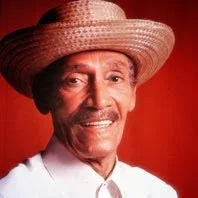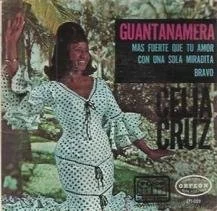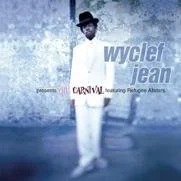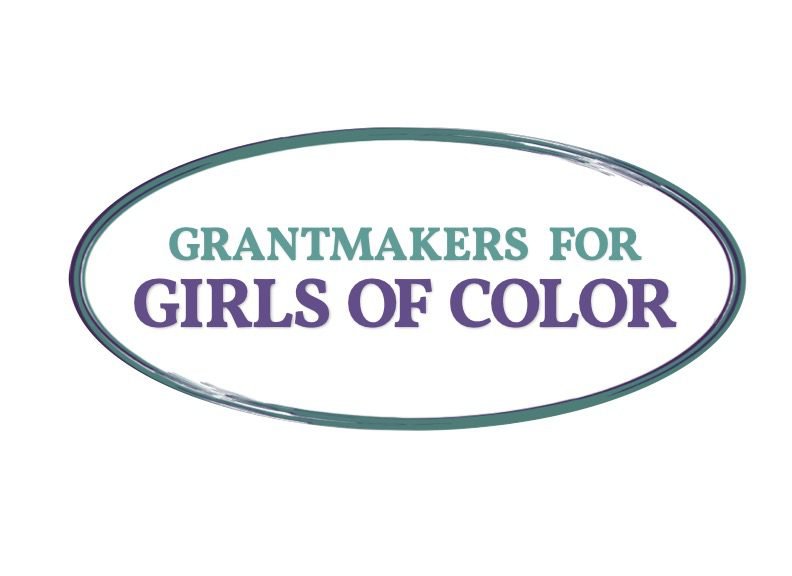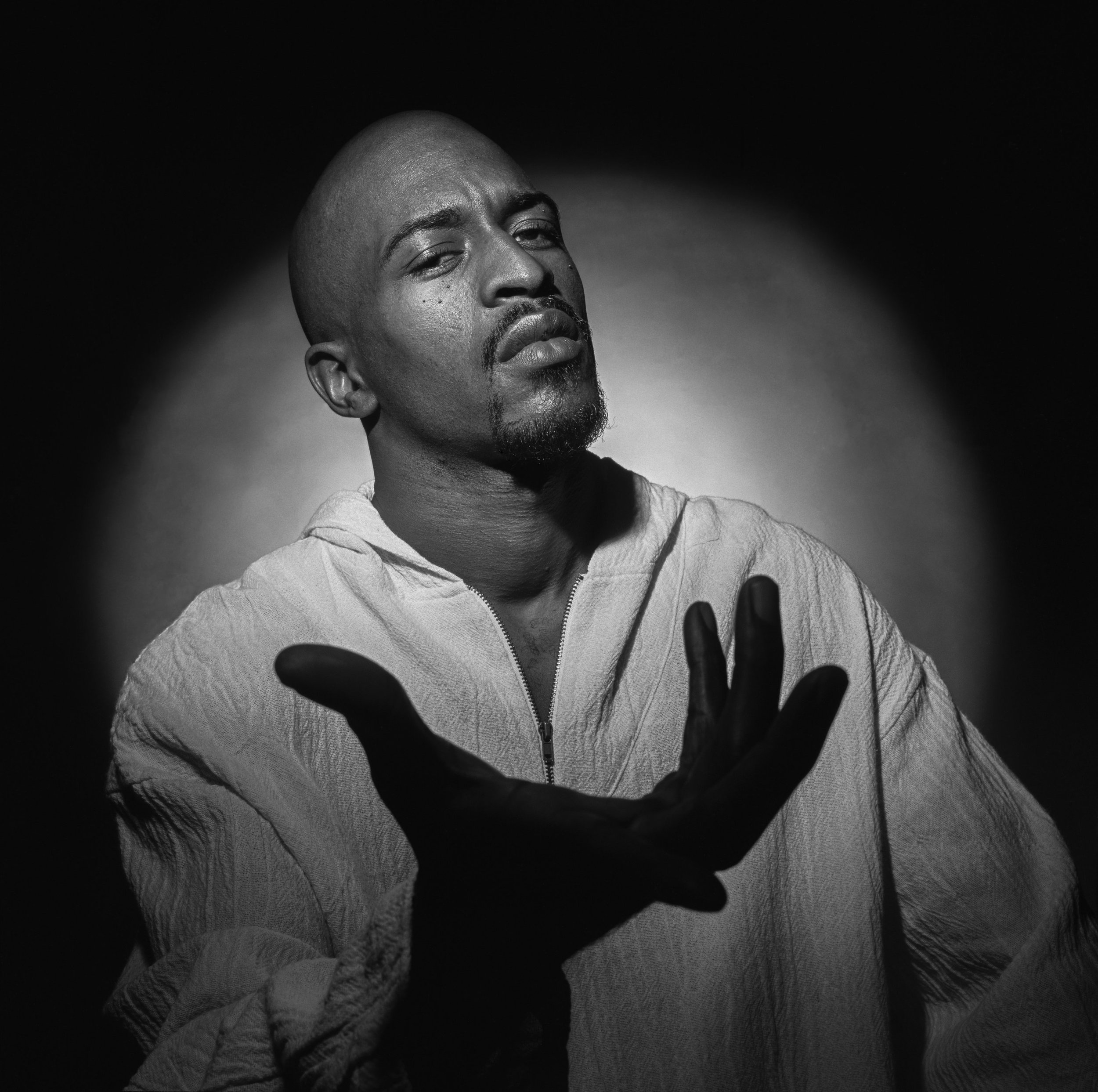
A CCCADI EDUCATOR’S GUIDE
ABOUT THE EDUCATOR’S GUIDE
This guide was developed as a resource to support the Caribbean Cultural Center African Diaspora Institute’s exhibition, Rhythm, Bass and Place: Through the Lens. The sections and suggested lesson activities below will explore the concepts of the exhibition. Section I: The Reflections of Music Overview covers the range of music throughout the Diaspora. Section II: Knowledge of Self and Community, focuses on Hip-Hop’s fifth element and its significance to the culture. Section III: Sampling and Sonic Lineage highlights the art and historical trajectory of making Hip-Hop music. Section IV: What is a Mixtape? explains how Hip-Hop spread with the cassette tape. We invite you to utilize this guide as a resource for exploring Hip-Hop and its significant cultural impact.
-
The Rhythm, Bass and Place: Through the Lens exhibition is on display at the Caribbean Cultural Center African Diaspora Institute (120 E. 124th Street, NY, NY 10035) from March 17 - June 24, 2023. This exhibition explores the works of Malik Yusef Cumbo and Joe Conzo Jr., New York photographers who have documented the essence and elements of multiple genres of Black music as they evolved between the 1970s - 2000s. Through black and white photographs, they’ve collectively helped us see how musical styles were created in New York City’s Diasporic communities. From portrait to photojournalism, Rhythm, Bass and Place: Through the Lens is a testament of a social movement, a cultural renaissance and a communally crafted sound experience that reverberates throughout the world. This exhibition is organized during a special time, during the global celebration of Hip-Hop’s 50th anniversary, a culture and genre born of reggae, jazz, salsa, merengue, soul, funk and disco.
These photographers created a visual culture that amplifies the sounds our people make when gathered in neighborhoods across nations.
Rhythm, Bass and Place: Through the Lens is part of CCCADI’s five-month-long series, entitled Rhythm, Bass and Place: Connections and Reflections on Music of the African Diaspora, which celebrates the migration and creative evolution of Black music by highlighting the routes of rhythms and sound culture in a Diasporic context.
This series constructs a living archive through engaging stories from neighborhoods, stages, studios and dance floors that shaped the sonic landscape in select U.S., U.K. and Caribbean cities over the last three decades.
-
The Caribbean Cultural Center African Diaspora Institute (CCCADI), is an arts, culture, education and media organization that advances cultural equity, racial and social justice for African descendant communities. CCCADI's programs serve children/youth, families, young professionals, elders, local and international artists, and practitioners of African-based spiritual traditions. Through its work, CCCADI offers a collective space where African descendants honor the contributions of the global African Diaspora through exhibitions, performances, conferences, educational programs and international exchanges.
Reflections of Music Overview
Music is a universal art form that uses organized sound to communicate. The two main sources for music are the human voice and instruments, however, anything that makes a sound can be turned into music. It is used for events and ceremonies such as birthdays and funerals. Music can express moods, feelings, and emotions. It inspires and infuriates. It relaxes and re-energizes. Like a mirror, it can reflect the times and attitudes of a particular group of people. Many have high regard for the power of music. As Nigerian musician Fela Kuti said, “Music is a spiritual thing. You don’t play with music.”
Uniquely, musical genres of the African Diaspora have always had a thread of resistance in them, particularly because of the Trans-Atlantic Slave Trade and the continued oppression of those who are of African descent. The Diaspora has since created various subgenres of music reflective on place and time in the Western Hemisphere. This includes but is not limited to salsa, merengue, bachata, mambo, reggae, calypso, soca, kompa, zouk, blues, rock & roll, jazz, go-go, soul, funk, house, R&B and rap music.
This year, Hip-Hop culture celebrates its 50th anniversary. On August 11, 1973, young entrepreneur, Cindy Campbell threw a back-to-school party and hired her big brother, DJ Kool Herc to play for the gathering which is known as the birth of Hip-Hop. The culture was created for and by the youth who were marginalized in the Bronx, New York. These young people found their voice, and their sense of identity through the four original elements: DJ-ing, MC-ing/rapping, graffitiing and breaking. The fifth element of Hip-Hop, knowledge of self, was added later. In its baby years, Hip-Hop became a vehicle that diffused gangs and became a positive outlet that united New York City youth. It is now a global phenomenon that has captured the hearts of many.
MCing (rapping) is the most popular element and has generated billions of dollars, but it started with the DJ and/or their friends getting on the mic while the music played and saying a few words to move the crowd. Later on, the MC began talking over tracks to tell their stories about who they are, their aspirations, and the world around them. The rest is history.
II. Knowledge of Self & Community: Hip Hop’s 5th Element
Hip-Hop’s fifth element, Knowledge of Self and Community can be found in all of the elements. It came after the other four original elements when Hip-Hop culture started to be more commercial. The original love, resistance and creativity that made the culture so unique started to get eclipsed by its profits. The New York City youth during the 1970s and 1980s who engaged in the culture took a particular pride in how they represented themselves. Their once ignored and stereotyped identity took center stage. These young adults knew their value and the amazing things they could and would accomplish. Whether they showed it in the way they danced, DJ-ed, MC-ed or what they wrote on trains, they knew they were more than just a statistic and what mainstream society thought of them. Every pose, every outfit, the positioning of who is standing next to who, the nameplates, b-boy stances, and customized matching outfits to represent their crew helped to tell a pixelated story that stated: I am here.
Through this curation of images by Joe Conzo Jr. and Malik Yusef Cumbo in this exhibition, we get to see different parts of Hip-Hop culture. Conzo’s images show us the people and dynamics of the world that NYC youth were living in when they were creating Hip-Hop culture in its early days. While Cumbo’s portraits are of the culture’s artists in the 1990s and 2000s. If a photo is worth a thousand words, the culture has an infinite number of stories to tell—not just in the songs!
Knowledge of Self: The Griots
Malik Y. Cumbo’s portraits captured Hip-Hop’s griots. Griots are the storytellers, poets, and musicians who tell oral histories in different areas of West Africa. The Hip-Hop griots tell stories about what’s on their minds, what happens in their environment, social injustices, growing pains, and their aspirations.
Rakim, of the rap duo Eric B. & Rakim, is a rapper who changed the flow of rhyming in the late 1980s. He intentionally switched the common style of rapping to make sure that his audience comprehended the messages in his music. Rakim’s conscious lyrics included what he learned from his socialization of growing up in New York and his spiritual journey. He argued that it is important to know who you are and where you came from. The pro-Black leadership that existed in the 1960s was in some aspects replaced by rap music for educating and informing the community. Rakim saw his role not just as a rapper, but as a leader with a social responsibility to his people and would rhyme about topics that sparked listeners' interest to learn more and assist with their knowledge of self. In his song, “Follow the Leader” he rapped:
“Since you was tricked, I have to raise ya
From the cradle to the grave
But remember - you're not a slave.”
Rakim’s rhymes have made him one of Hip-Hop’s greatest griots of all time and have influenced many rappers after him, so much so that many have recited his rhymes as a nod to his lyrical mastery. Many have had their own stories to tell and different ways of telling them, from The Notorious B.I.G in Bed-Stuy, Brooklyn to Snoop Dogg in Long Beach, California. They chronicled what they were exposed to, and even if they were across the country, listeners in similar environments and lifestyles related and recited their rhymes. Rap music also became a reflection of sociopolitical experiences and how they impact a person’s mind. Topics that were taboo in other musical genres or not covertly expressed were and still are raw and uncut in rap music. The griots do not have a filter or limit for what they want to share.
The “Queen of Hip-Hop Soul,” Mary J. Blige is also a griot. Since her debut in 1992, her highness has represented the culture with fashion, language, and collaborations with other Hip-Hop artists. For over 30 years, Blige has been a staple in Hip-Hop culture and has worked with artists like Lauryn Hill, Drake, Jay-Z, The Lox, The Notorious B.I.G., Method Man and Dave East. On her debut album, Mary raps and asks Grand Puba of the Brand Nubians: “What’s the 411?” Blige represents women of all ages within Hip-Hop culture. She told stories that related to those who sat on stoops and ate sunflower seeds with bamboo earrings in the summer, and those in the office who rocked high ponytails with long bangs swept in the front of their face, with designed acrylic nails and hoop earrings, while fulfilling their dreams. Women who were all beautiful and trying to understand love and life with the aid of Mary’s vinegar-honey voice over dope beats. However, like so many, her self-actualization to “Be Happy” has been a journey of self-reflection. In addition, she also retells others' stories by doing cover songs such as Aretha “The Queen of Soul” Franklin’s “Natural Woman” and the soul group, The Stylistics’, “You are Everything.” Her discography is a journey of self-analysis to know herself.
Knowledge of Community: The Cyphers & the Canvases
In Hip-Hop culture, the cypher (cipher) is a freestyle session created by dancers and rappers that forms a circle. As opposed to battling, where the dancers or rappers go against each other, the cypher is a collaboration of the collective. There is no hierarchy and allows participation for all. Some attendants are just there to observe and be a part of the moment. The person in the center of the cypher comes with their latest and best rhymes to share with the crowd. It’s all love.
Graffiti, a Hip-Hop element, which is the writing or drawing on a public or private surface has a long history of being shamed and praised. What many called vandalism, others called art. In the late 1960s and early 1970s, graffiti took off in the streets of New York City. The youth used markers and spray paint and New York City’s surfaces were their canvas. By “tagging“ (the way an artist wrote their name; signature), “bombing” (writing your tag all over a surface), and creating “pieces” (short for masterpiece and usually elaborate in detail), they covered hallways, walls, store shutters, abandoned buildings and train cars. This drew a huge backlash from city officials and many New Yorkers. Mayor John Lindsay said that graffiti impeded on New Yorkers' “quality of life.” However, for Hip-Hop’s youth, it was their way of mattering to themselves and each other by writing their name and showing off their creative side. Many of the rappers, dancers, and DJs including DJ Kool Herc were also graffiti artists.
By the 1980s, this form of artwork went from the side of buildings to art galleries in downtown Manhattan. If you look at Joe Conzo Jr.’s work, you will see the graffiti in the background, so even if the writer was not in the picture, their name or artwork was. It is another indication of “who was all there.”
Lesson Activity I: Knowledge of Self…I am
Learning Objective: Participants will learn a method of self-awareness and be cognizant of how they view themselves.
Instructions:
Take a selfie or use a picture of yourself (only you should be in the picture).
Look at your picture for two minutes. Who do you see? Who are you?
On a sheet of paper, write 20 sentences starting with “I am” and then complete the sentence. You can make the sentences as long or short as you would like.
For example:
I am strong, content, and lazy sometimes.
I am an animal lover. I am proud of who I am. I am a basketball star.
I am not the same person I once was. I am better and will continue to be.
Lesson Activity II: Knowledge of Community
Learning Objectives: This activity enables participants to examine the different views of their community by capturing their environmental landscape. It allows them to record the strengths and concerns of their community and the impact it has on their lives. Through these images, participants will tell the stories of their neighborhoods and experiences and have critical dialogues about their surroundings.
Instructions:
Participants will walk around their neighborhood and take pictures of their world and then answer the following:
Who or what is in the picture?
When and where was the picture taken?
What do you notice, what stands out?
Are there things that you didn’t notice until now?
How long have you lived in this neighborhood?
Are there any changes since you have been living there? If yes, what are they?
Compare your images to Joe Conzo Jr.’s featured images. What are the similarities and differences between the photo sets? Are they totally different? Does anything overlap? How do these findings impact the makeup of these respective neighborhoods?
Lesson Activity III: Exquisite Corpse
Lesson Activity III: Exquisite Corpse
Learning Objectives: Create a form of exquisite corpse, a collaborative method where artists work together to create one body of work, to exemplify the democratic ethos of Hip We-Hop culture.
Option 1 Instructions:
As a group choose a prompt to create a story or poem. One person will write a sentence on a sheet of paper then conceal what was written and pass it onto the next person until everyone has written something. Then read the unique collaborative composition aloud.
Option 2 Instructions:
In groups of two, participants will draw on one-half of the brick wall, cover it and then switch with another person who will draw on the other half of the wall. See Resources.
In-person materials needed:
III. Sampling and Sonic Lineage
In music, sampling is taking any part (instrumental and/or vocals) of a pre-recorded song to make another song. Some songs can have samples from multiple songs. DJs and/or producers have sampled from all other genres and eras for the rapper. Many of these songs were heard while growing up in their homes and neighborhoods such as jazz, salsa, soul and R&B. When a song is sampled and credited, the original artist’s work lives longer. This creates a sonic lineage that connects spaces, people, time, and cultures together. It becomes like the expression of an ancestor remembered and being present.
For example, Haitian rapper Wyclef Jean’s 1997 hit song “Guantanamera” (translation: A woman from Guantanamo) sampled Cuban singer, Celia “The Queen of Salsa” Cruz’s 1966 version. However, if we rewind the history tape, the song’s lineage goes even further than that. José Marti, Cuban poet, and national hero, wrote it as a poem “Versos Sencillos” in 1891, and Joseito Fernández is credited for turning it into a song in 1929. Cruz was featured on Jean’s updated Hip-Hop version with a heavier bass in the track. The sonic lineage of “Guantamera” also expands beyond that with American artist, Pete Seeger who recorded his version in 1963 in response to the Cuban Missile Crisis, and the folk-rock group The Sandpipers recorded theirs in 1966. Ultimately, the words of José Marti have been recited for over 100 years.
The sonic lineage of “Guantanamera”:
Lesson Activity IV: Press Rewind
(Internet access, as well as audio, is required for this activity.)
Learning Objective:
Participants will learn how to research the history and components of rap songs and become more aware of the songs that inspired or helped create the music they listen to today.
Pre-activity: Listen to Nicole Bus’ “You” (2018), Wu-Tang Clan’s “C.R.E.A.M.” (1993), and The Charmels' “As Long As I’ve Got You” (1967). Make a list of the similarities among the songs.
Instructions:
Participants will choose a current song from the Diaspora (released in the last five years) and then go to whosampled.com and research whether the song has a sonic lineage.
What is the name of the song, the artist, and the song’s genre?
Was the song sampled?
What parts of the song were sampled (instruments, vocals, hooks…)?
Listen to the song sampled (if possible), can you hear what was taken from it (instruments/vocal)?
Did any other artist or group sample the song?
Do you think the artists of the parts sampled would like the newer song created? Why or why not?
Reflecting on this exercise, what is your understanding of sonic lineage and the songs you listen to?
IV. What is a Mixtape?
Lou Ottens was a project manager at the electronics company Philips Electronics who wanted to simplify the reel-to-reel mechanism used for audio and video tapes that was accessible, compact, and affordable, so his team invented the compact cassette tape (“cassette,” “tape”) in 1963 (Taylor, et.al., 2018; McCoy, 2018). The blank cassette allowed DJs to record their mixes, live shows, and park jams and used them to promote their artistry and make additional income. Traditionally recorded onto a compact cassette, or mixtape is a compilation of songs from various sources arranged in a specific order. Mixtapes became vehicles that spread not only the DJ’s mixing but also the rhymes of their counterpart, the MC, beyond the five boroughs (McCoy, 2018; Taylor, et.al., 2018). The tape’s easy ability to be duplicated and distributed created second and third generations of a mixtape. Unfortunately, copies of a copy decreased the mixtape quality. However, to be “there” and hear the mix, the energy of the crowd, and the shout-outs that let you know who was there, was worth it (McCoy, 2018). The mixtapes created an intimacy that years later evokes nostalgia when replayed.
Cassette mixtapes were not just for the party DJs. With the cassette tape, the average person could create an intentional mix for a party, a love interest or to go to summer camp (Taylor, et.al., 2018). A mixtape is also a time capsule, sonically representing a particular space and time. The person who created it usually remembers when and where they made it and how they felt. Moreover, if the mixtape is a gift, the person who received it will also remember the moment they received it and/or when they first played it.
Lesson Activity V: Memory Mixtapes
Learning Objective: Explore how DJs curate their music selections.
Instructions: Create a mixtape (up to 12 songs) of the music you listen to, inspires you, is currently in your rotation, and/or reminds you of someone. Choose five of those songs and write down their significance.
Use the following guided questions:
1. What are the names of the songs and artist(s)?
2. Why did you choose these songs?
3. What are these songs about? (Love, identity, social justice)
4. How do they make you feel?
5. Who would you recommend these songs to and why?
6. How do the songs flow with each other? What is the order of the songs you have selected?
Glossary of Terms:
African Diaspora—The dispersion of Africans throughout the world, particularly as a result of the Trans-Atlantic Slave Trade. All persons of African descent who have been dispersed from the continent, as well as continental African, are part of the modern African Diaspora.
Breaking (Break Dancing)—One of the original Hip-Hop elements that started in the 1970s that was performed by teenagers to rap music. The dancers would wait for the break or the instrumental of the song to show their best moves including but not limited to pantomiming, spinning headstands, and fancy footwork. The dancers are known as breakers, B-boys or B-girls.
Cypher (Cipher)—In Hip-Hop culture, it is a freestyle session that forms a circle of rappers or dancers. As opposed to battling. The person in the center of the cypher comes with their latest and best to share with the crowd. There is no hierarchy and allows participation for all.
DJ—A person who announces and plays popular music for an audience.
Exquisite Corpse—A collaborative method where artists work together to create one body of work. It can be written or drawn. However, the work by the first or previous artist is concealed and then passed to the next person until it is complete.
Genre—A category of artistic composition that is characterized by its form, content or style.
Graffiti—Writing or drawing on a public or private surface.
Griot—A member of a class of traveling poets, musicians, and storytellers who maintain a tradition of oral history in parts of West Africa.
Hip Hop—A culture that was created by young adults in the Bronx in the early 1970s. The four original elements (Graffiti-ing, DJ-ing, Breaking, MC-ing) became different forms of voices for New York City’s marginalized youth to express themselves. It has since become a global phenomenon.
Knowledge of Self and Community—The fifth element of Hip-Hop. It was added after the culture started to go mainstream and the practitioners started to focus on the profits instead of the love of the culture.
MC (Rapper)—Someone who performs a style of music that involves speaking, rather than singing.
Mixtape—Traditionally recorded onto a compact cassette, a mixtape is a compilation of songs from various sources arranged in a specific order.
Sampling—in Hip-Hop, it is taking any part (instrumental and/or vocals) of a pre-recorded song to make another song.
Sonic Lineage—This is not only more than a list of musical sources that share the same sentiment but also the tracing of earlier sources of a newer musical sound. It can also be sounds that inspire newer musical compositions.
Citations
McCoy, R. S. (April 11, 2018). Three Columbia Community Scholars discuss “Hip-Hop Education: Propelling and Preserving the Movement.” Columbia University School of Professional Studies Community Scholars Lecture and Panel Discussion.
Mixtape museum. (2018). The Mixtape museum: Preserving the past, present, and future one mixtape at a time. Retrieved from https://mixtapemuseum.org
Taylor, Z., Ottens, L., Rollins, H., Sheffield, R., Jurado, D., & Gravitas Ventures (Firm). (2018). Cassette: A documentary mixtape.
Resources:
Acknowledgements:
Rhythm, Bass and Place: Through the Lens
Artists: Joe Conzo Jr. and Malik Yusef Cumbo
Curator: Lynnée Denise
Exhibition Guide: Kashema Hutchinson, Director of Arts Education, CCCADI
The CCCADI Rhythm, Bass and Place series and exhibition are made possible by the generous support of the New York State Council on the Arts, New York City Department of Cultural Affairs, New York City Council Speaker Diana Ayala, New York City Councilmember Crystal Hudson, New York City Councilmember Sandra Nurse, New York City Councilmember Althea Stevens, The Howard Gilman Foundation, The Pinkerton Foundation, Grantmakers for Girls of Color, and the Warner Music Group/Blavatnik Family Foundation Social Justice Fund.












